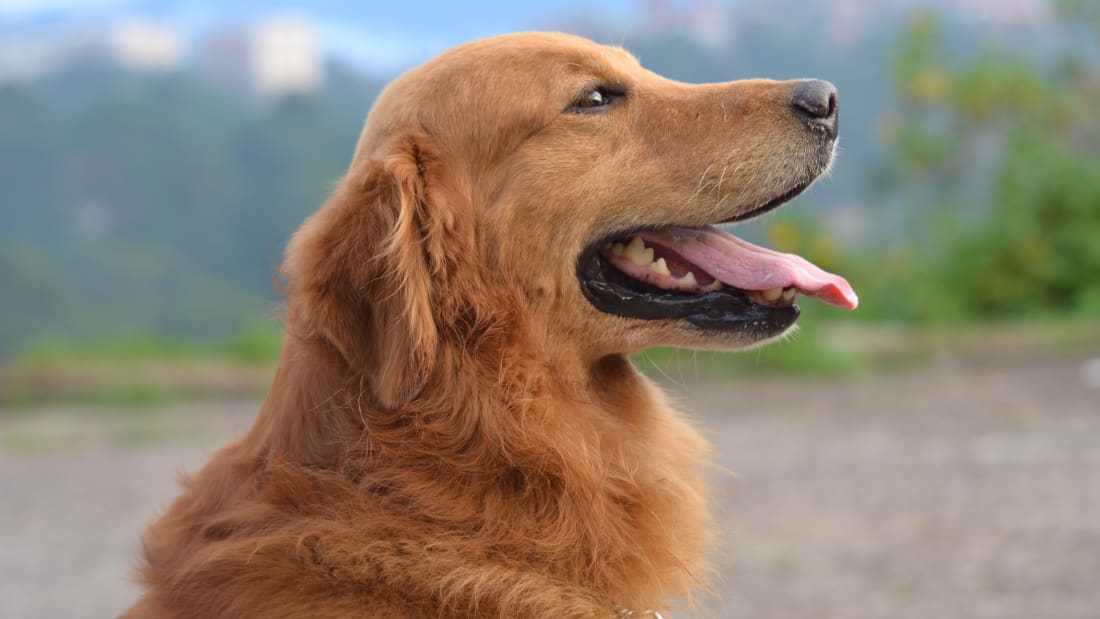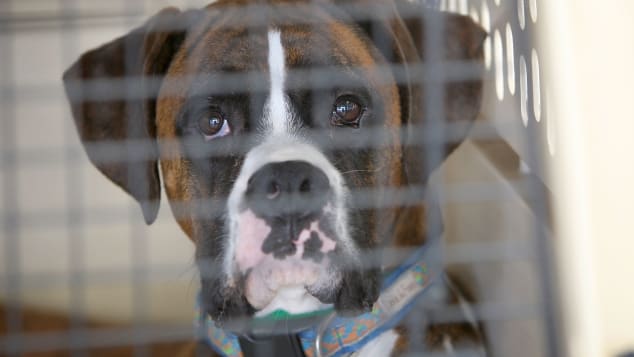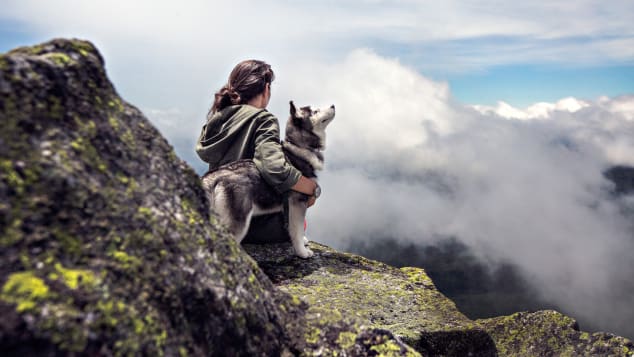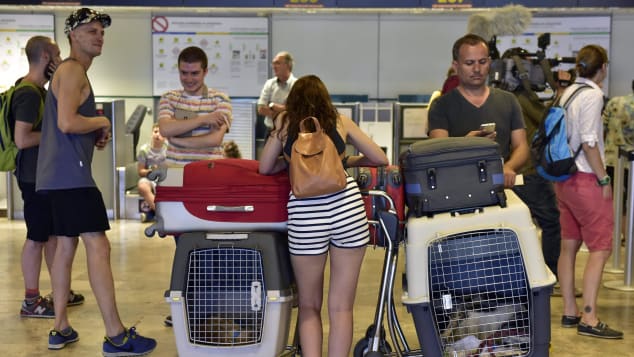Travel
How to fly with a dog: Tips for traveling safely with your pet

(CNN) — Traveling anywhere by plane for a dog owner once meant a painful farewell, but thanks to a surge in the number of pet-friendly hotels and airlines, more people are taking their faithful friend with them when they fly.
But cases involving tragedy and confusion when transporting animals have raised questions over the best way to fly with a dog or other pet — and whether animals should travel by air at all.
Some, such as TV’s “Dog Whisperer” Cesar Millan, advocate traveling everywhere with your dog. Organizations such as the Humane Society of the United States urge caution.

There are steps you can take to ensure your dog remains happy and healthy while on board.
David McNew/Getty Images North America/Getty Images
Kitty Block, CEO of the Humane Society of the United States, says flying with dogs and other pet animals should always be a last resort.
“If you have to fly […] don’t take your animal unless obviously there aren’t any options,” she says. “It’s not an ideal situation for an animal, and it can be stressful for the animal.”
If you don’t have a choice, she says, the key is to be as prepared as possible.
In the weeks leading up to the flight, the animal needs a veterinarian health check to make sure its fit to travel and its immunizations are in date.
Which airline?
As soon as you’ve decided to fly with your pet, call the airline, advises Block. Not all carriers take animals, and rules for flying with them varies.
Website Petfriendlytravel.com has an extensive round up of global airlines and their policies on pets.
Among the most pet-friendly of the pack is Virgin Atlantic, with its Flying Paws plan that gives pets their very own reward scheme.
Sorry, no free flights though. Pets collect “paw prints,” which can be redeemed for gifts such as Burberry, Prada and Gucci pet clothing.
Fancy dress delights aside, pet owners do need to pay attention to the small print when booking flights for their animals.
For instance, Air France says some pets are accepted in the aircraft cabin and in the aircraft hold. But certain “attack dogs” similar to Staffordshire terriers or pit bulls, mastiffs and tosas, will not be carried.
Singapore Airlines requires that your pet has a certificate of good health but does not allow pets to travel in the cabin of the aircraft.
Most North American airlines, however, do let small pets travel in the cabin with you on flights provided you let them know at the time of booking. Fees can be steep, and some allow only domestic travel.
“We don’t recommend one [airline] over the other,” says Block. “What we say is call ahead, be the best advocate for your animal.”
Dog passports

Taking your dog on vacation is not always the best option, if you have to — there are tips you can follow.
Courtesy Pexels
So you’ve found an airline that will accommodate you and your pooch. Next comes the hard part. Red tape.
Pet immigration laws are specific to each country, but one way to cut down on some of the headaches is to create a pet passport, which is “a collection of all identifying and required documents for entering a given country,” advises Pettravel.com.
A pet passport is an essential part of the Pet Travel Scheme (“PETS”), a system that allows animals to travel into the United Kingdom without undergoing quarantine if all the regulations are followed.
It was originally introduced in 2001 for animals entering or returning to the UK from other European Union countries, but has since rolled out to other countries such as the United States, Canada, Australia and New Zealand.
Pettravel.com has a full list of country-specific pet immigration rules, with an option to purchase the necessary forms online.
Pet preparation
Next step: pee control.
Though probably a little easier than flying with kids, heading out on an epic journey with your dog isn’t as simple as throwing it into a pet carrier and taking off, warns Cesar Millan.
You need to prepare them for the long journey and let them get used to their carrier.
“Don’t just put them in a crate the day before. It should be a transition,” he told CNN in a 2012 interview. “You have to teach your dog to hold its bladder — it’s almost like training for a marathon.
“Go through the process before you fly. For example, flying from Los Angeles to Spain is 14 hours.”
Before you buy a pet crate, check out the International Air Transport Association’s list of pet carrier requirements, which most airlines adhere to.
What to do on board
When it’s time to fly, your pet should either be checked in as cargo or stowed in a cage under the seat in front of you, depending on its size.
Cargo has risks, says Block. Potential hazards include poor ventilation and extreme temperatures.
“You just have to make sure that you keep in mind if you’re traveling in the summer months how hot it is, you want to avoid any layovers so your dog is not in cargo holds or sitting in tarmacs and then having multiple transfers,” advises Block.
Taking your animal in the cabin? Bear in mind the size restrictions for animals. Some airlines also have limits to the number of animals allowed per cabin.
Each airline has its own regulations and procedure, which Block advises familiarizing yourself with before the flight.

Traveling with a pet is always more stressful.
GERARD JULIEN/AFP/AFP/Getty Images
The Humane Society advises that you should be vocal about your animal and its needs — whether it’s with you in the cabin or in the hold.
“It never hurts to let as many people know [that your animal is on board],” says Block. “There can always be break down of communication.”
She also voices her concern over an recent incident in which a dog was mistakenly shipped to Japan instead of Kansas.
“We can’t stress enough that when you have an animal in commercial travel, you really have to keep making sure that everyone’s aware of it and that it’s proceeding correctly.”
Rules for so-called assistance and emotional support animals (which recently made the headlines when a woman attempted to bring her “emotional support peacock” on board a flight) are slightly different.
“Because these animals are emotional support they stay with the passenger,” explains Block. However, she stresses there are no universal rules — and passengers should still check with the airline before traveling.
Changing rules
Block and her team at the Humane Society are currently advocating against animals being placed in the overhead locker, which caused recent dog death on a United Airlines flight.
“We’re looking at legislation that would prohibit […] a small carry-on animal ever being put in the overhead bin — clearly that was a disaster, with dire consequences,” she says.
But Block is hopeful for the future, describing the incident as a potential “watershed moment.”
In an ideal world, commercial air travel would be introduced specifically for animals, catering for their needs.
“The statistics are not good of how many die each year, and so that should not happen,” she says. “There are always going to be some accidents, but this many is a problem, so we’re really looking at this as it’s time to clean this up and it’s not an afterthought.”
Ultimately, Block says as much care should be taken with animals traveling as humans.
“These are not cargo, they’re not suitcases, they’re living beings and they’re our family members. So we really have to make sure that it’s safe for our animals.”
Saying goodbye
If you do have to leave your dog behind, don’t worry about separation anxiety. Millan says that with proper training your pet can handle the time apart — even if you can’t.
But it’s also an issue that needs to be worked out if you’re traveling with your dog, as there will be times you want to leave it in the hotel room without having to worry about it barking and clawing at the door or chewing things up when you’re out.
“Separation anxiety is created by humans because they feel closer to the dog the more they bond. That’s not realistic for the dog, which doesn’t understand.”
“I have to help people and show them how we create separation anxiety. In Mexico, a dog is not allowed in the intimate space. We don’t have a living room. Dog lives outside. Detached from humans.
“In America, a dog lives on top of the human. The human goes to work, the dog doesn’t know how to separate from them. It’s easy to rehabilitate, but you have to understand the concept of proximity for training to work.
“It’s not good to let your dog follow you everywhere. Tell them when they can be near you, then tell them to go away,” suggests Millan as a method of lessening your dog’s attachment to you.
[“Source-gadgets.ndtv”]
